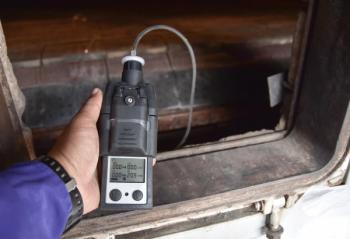
Advancing Laboratory-Based Simulations of Exoplanetary Conditions with KBr Glasses
Key Takeaways
- KBr glasses generate high-resolution infrared spectra, aiding exoplanetary condition simulations and enhancing data interpretation from the James Webb Space Telescope.
- They encapsulate refractory molecules, producing reproducible spectra under controlled conditions, serving as benchmarks for astronomical observations.
Recently, a team of researchers conducted a study that simulated exoplanetary conditions.
Recently, a team of researchers from two institutions, the University of Florida and the University of Paris, conducted a study that simulated exoplanetary conditions. Their paper, which was published in Research Notes of the AAS, explored the benefits of using potassium bromide (KBr) glasses to propel laboratory-based simulations of exoplanetary conditions forward (1). The researchers demonstrate that KBr glasses can generate high-resolution infrared (IR) spectra relevant to exoplanetary environments (1).
What are exoplanets?
Exoplanets, also known as extrasolar planets, are planetary bodies that exist outside our solar system. Although most exoplanets orbit another star in the galaxy, they don’t necessarily need to in order to be considered exoplanets (2). Currently, NASA has confirmed 6,000 exoplanets, and it is expected that more will be confirmed (2). Scientists have numerous methods for detecting exoplanets. Two of the main techniques include the transit and radial velocity methods (2).
Much research surrounding exoplanets is concentrated on understanding the opposition surge effect and the
How have KBr glasses been used for studying exoplanets?
KBr glasses have been used in astronomy to characterize molecular vibrations, which can provide information into the chemical compositions across astrophysical contexts (1). Scientists have mostly used KBr glasses for infrared (IR) spectroscopy because of their ability to produce excellent molecular spectra (1). However, the research team notes that the application of KBr glasses in simulating exoplanetary conditions, particularly in laboratory settings designed to mimic extreme chemical, pressure, and temperature environments, remains largely unexplored.
In their study, the researchers showed how laboratory simulations, when paired with KBr glasses, can generate spectral reference data under conditions approximating those found on exoplanets. Specifically, KBr glasses can be used to encapsulate refractory molecules such as polycyclic aromatic hydrocarbons (PAHs), a class of complex organic compounds considered significant in both astrochemistry and astrobiology (1). By subjecting these molecules to controlled pressure and temperature variations, researchers can produce reproducible, high-resolution spectra that serve as benchmarks for interpreting astronomical observations (1).
Has KBr glasses helped improve space-based observations?
The researchers note that because the James Webb Space Telescope (JWST) is being used to study exoplanets, the capability KBr glasses provides can be advantageous for researchers. Without KBr glasses, interpreting JWST spectra is challenging because astronomers normally deal with overlapping spectra; features and complex spectra (1). The researchers argue that KBr-glass-based simulations could overcome these challenges by offering clean laboratory reference spectra for condensed or surface-bound molecules, particularly those not easily studied in gas-phase environments (1).
Are there any limitations with KBr glasses?
Although KBr glasses can improve the analysis of surface compositions and condensed states of matter, their usage does come with limitations. For one, KBr glasses cannot fully replicate the atmospheric dynamics of exoplanets (1). For two, they are also not capable of replicating gas-phase behaviors on exoplanets (1). Recognizing these limitations is important because it helps researchers determine when KBr glasses should be utilized in the study of exoplanets.
Beyond their immediate utility, the researchers suggest that future work should expand the spectral database of molecules studied in KBr glasses, encompassing a broader range of organics and inorganics relevant to exoplanetary environments. Such databases would provide essential inputs for astrophysical models, strengthening the interpretation of telescope data and improving molecular detection capabilities (1).
What are some other key takeaways from this research note?
The researchers also provide some other areas where KBr glasses and IR spectroscopy can be used. Besides traditional spectroscopic applications, KBr glasses can help measure subtle circular dichroism (CD) and polarization modulation (PM) signals (1). These signals would provide complementary structural and scattering information, offering potential pathways for biosignature analysis (1). In combination with IR spectroscopy, they could bolster astrobiological interpretations by revealing molecular asymmetries and interactions tied to life-related processes.
References
- Shapshak, P.; Schneider, J. Potassium Bromide Glass: Simulating Exoplanet Settings for Infrared Spectroscopy. Res. Notes AAS 2025, 9 (5), 115. DOI:
10.3847/2515-5172/add72c - NASA, In Depth: Exoplanets. NASA.gov. Available at:
https://science.nasa.gov/exoplanets/facts/ (accessed 2025-10-01).
Newsletter
Get essential updates on the latest spectroscopy technologies, regulatory standards, and best practices—subscribe today to Spectroscopy.





